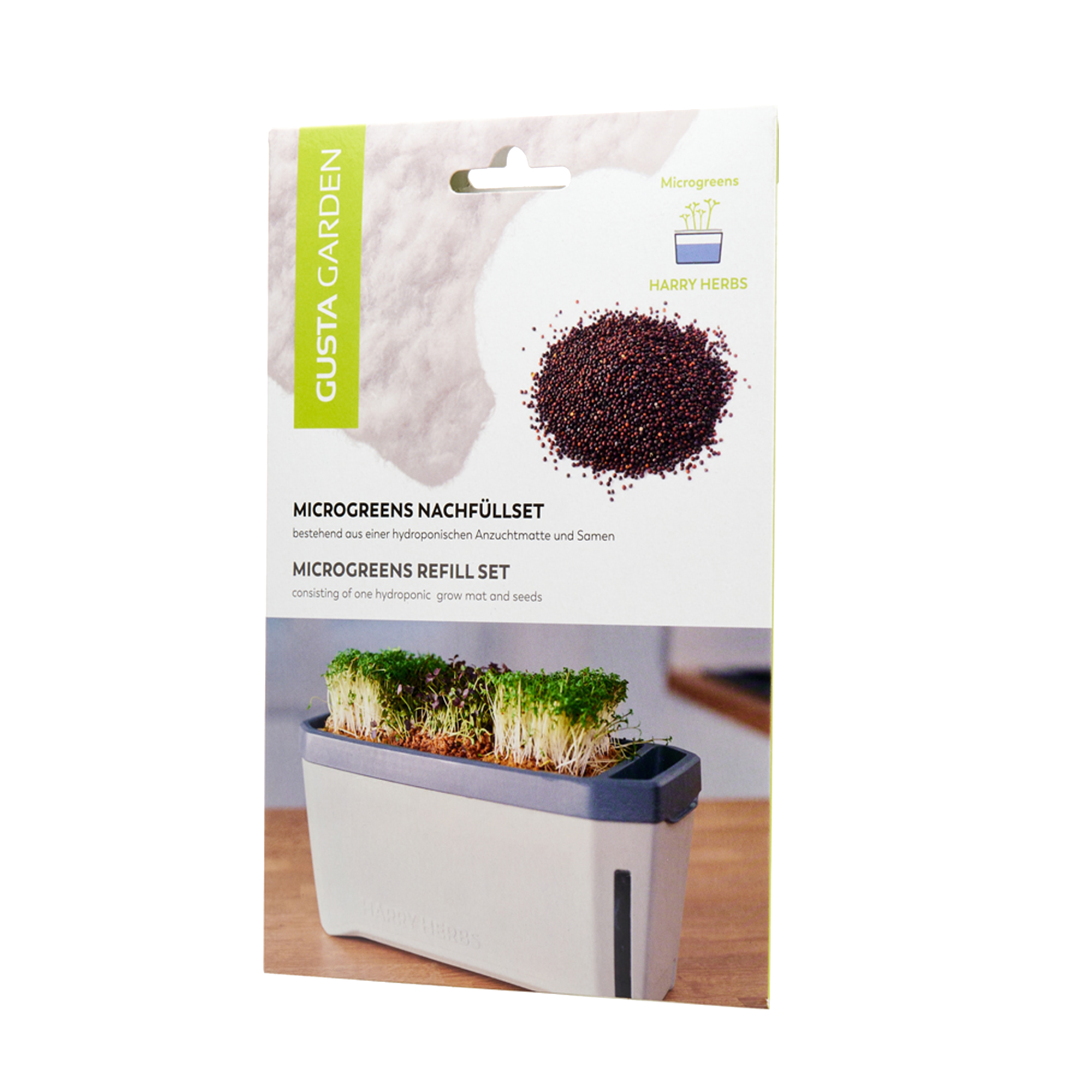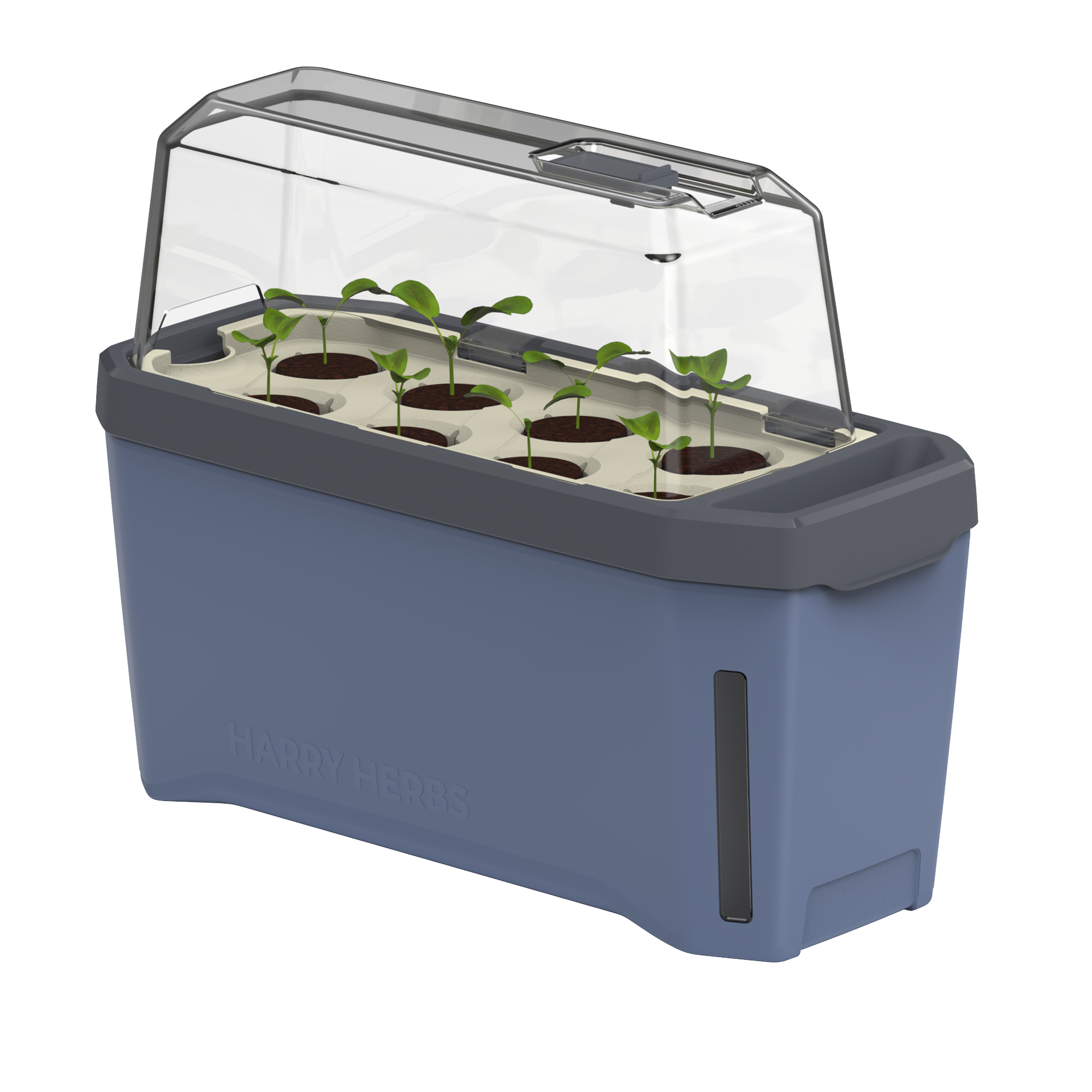
Microgreens are very trendy! But what do you actually mean by microgreens? What varieties are there and why are they so healthy? In this blog post we tell you more about the popular superfood.
What are microgreens?
The name microgreens – or microgreen – already gives a hint as to what could be behind the term. “Micro” in this case refers to the size and “greens” refers to the vegetable plants. Because they are tiny, young greens from certain types of vegetables and herbs that are harvested just a few days after sowing, when they are still in their development phase between sprout and plant.
The difference to sprouts lies in the stage of development. Sprouts can be harvested a few days earlier and eaten completely. Microgreens are harvested a little later when they already have their first (germinated) leaves that can be eaten.
The edible parts of microgreens are also the cotyledons and the upper stem. The root and the seed coat are not used, which means that the microgreens are clearly distinguished from the sprouts. The big advantage is that cultivation can take place all year round and most types of plants can be harvested after just 5-15 days. To do this, the microgreens are simply cut off just above the growing mat.
What varieties are there?
You can also grow almost any vegetable that is edible raw as microgreens. Only peppers, tomatoes, potatoes and other members of the nightshade family are out of the question because the green parts of the plant are inedible. Species that germinate quickly and evenly are particularly suitable. This includes all brassicas and close relatives such as mustard and radishes. Popular microgreens include cress, alfalfa, radish, broccoli, beetroot, chard, sunflower, buckwheat, peas, amaranth, chicory and carrots. You can find a selection of 6 different types of microgreens in a practical set including a cultivation mat here: Microgreens refill set .
ALREADY KNEW?
Microgreens have up to 40 times more vital substances than the fully grown vegetable!
How healthy are microgreens?
Microgreens are among the healthiest foods ever. In order to thrive, the seedling is packed with strengthening ingredients. According to studies, microgreens even contain up to 40 times more nutrients than full-grown vegetables. That's why you only need a much smaller amount of the small superfood to cover your daily requirements for vitamins, antioxidants and minerals. The seedlings are particularly rich in vitamin C, B6, E, K and secondary plant substances. All the nutrients that were previously locked in the seedling are awakened by the germination process and thus made accessible to our body.
How can I incorporate microgreens into my diet?

Microgreens are easy and versatile to use in your kitchen. Whether in the classic way on sandwiches or as a sophisticated topping on pasta or salads, there are hardly any limits to your creativity. The vitamin bombs also look good in wraps, salads, soups, smoothies or even desserts. Or maybe you could use some radishes in your pesto instead of basil? Since you should only harvest your microgreens in bunches as needed, you can easily enjoy them fresh every day.
All the benefits of green superfood summarized for you
✅ excellent ingredients✅ little space required
✅ Guaranteed success even without a green thumb
✅ easy to care for
✅ aromatic, intense taste experience
✅ spice up every meal
✅ They grow so quickly that you can practically watch them. 😉
























